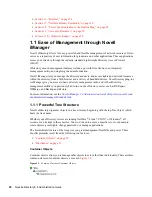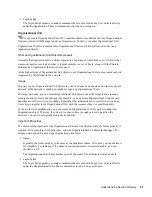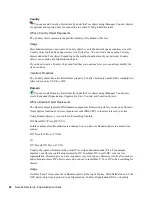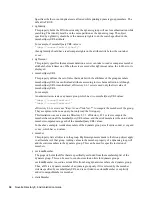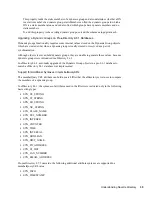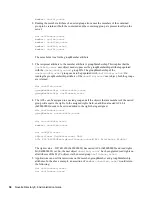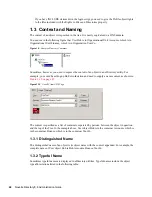
Understanding Novell eDirectory
31
no
vd
ocx
(e
n)
6 Ap
ril 20
07
What a User Object Represents
A User object represents a person who uses the network.
Usage
You should create User objects for all users who need to use the network. Although you can manage
User objects individually, you can save time by
Using Template objects to set default properties for most User objects. The Template applies
automatically to new Users you create (not to already existing ones).
Creating Group objects to manage sets of Users.
Assigning rights using the container objects as trustees when you want that assignment to apply
to all User objects in the container.
Selecting multiple User objects by using Shift+click or Ctrl+click. When you do, you can
change property values for all selected User objects.
Important Properties
User objects have over 80 properties. For a complete list of properties, select a User object in
iManager. To display a description for each page of properties, click
Help
.
The Login Name and Last Name properties are required. These and some of the most useful
properties are listed below.
Account Expiration Date lets you limit the life of a user account. After the expiration date, the
account is locked so the user cannot log in.
Account Disabled has a system-generated value that indicates a lock on the account so the user
cannot log in. The lock might occur if the account has expired or because the user has given too
many incorrect passwords in succession.
Force Periodic Password Changes lets you enhance security by requiring the user to change
passwords after a specified interval.
Group Memberships lists all the Group objects that include the User as a member.
Home Directory refers to a NetWare volume and file system path for the user’s own files. Most
administrators like to create such a directory so that a user’s working files can be kept on the
network.
The directory referred to in this property can be automatically created when you create the User
object.
Last Login is a system-generated property that lists the date and time that the user last logged
in.
Last Name, although required, is not used directly by eDirectory. Applications that take
advantage of the eDirectory name base can use this property, along with other identification
properties such as Given Name, Title, Location, and Fax Number.
Limit Concurrent Connections lets you set the maximum number of sessions a user can have on
the network at any given time.
Login Name is the name shown in iManager by the User icon. It is also the name supplied by
the user when logging in.
Summary of Contents for EDIRECTORY 8.8 SP2
Page 4: ...novdocx en 6 April 2007...
Page 116: ...116 Novell eDirectory 8 8 Administration Guide novdocx en 6 April 2007...
Page 128: ...128 Novell eDirectory 8 8 Administration Guide novdocx en 6 April 2007...
Page 255: ...256 Novell eDirectory 8 8 Administration Guide novdocx en 6 April 2007...
Page 406: ...408 Novell eDirectory 8 8 Administration Guide novdocx en 6 April 2007...
Page 563: ...566 Novell eDirectory 8 8 Administration Guide novdocx en 6 April 2007...
Page 573: ...576 Novell eDirectory 8 8 Administration Guide novdocx en 6 April 2007...
Page 601: ...604 Novell eDirectory 8 8 Administration Guide novdocx en 6 April 2007...




